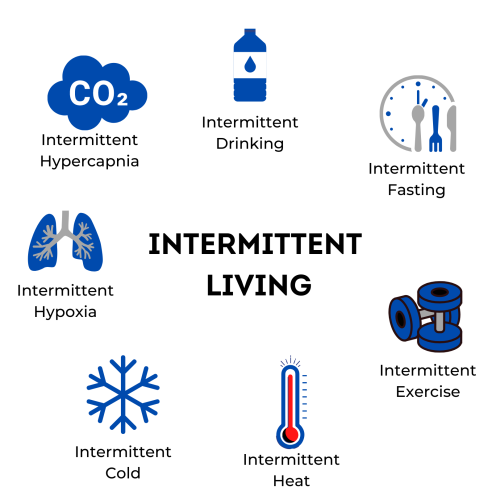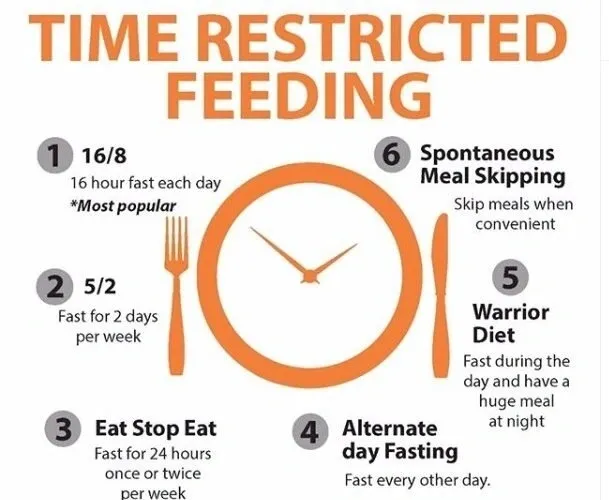Time-Restricted Feeding and Intermittent Living


Time-Restricted Feeding andBiological rhythms as a therapeutic starting point in preventive medicine Intermittent Living
Within the Linus Pauling Prevention Center (LPPC), we use scientifically validated lifestyle interventions that enhance the body’s natural resilience. Two powerful strategies in this context are Time-Restricted Feeding (TRF) and Intermittent Living. Both methods tap into evolutionary adaptive mechanisms and can reduce the risk of chronic disease, restore metabolic flexibility and modulate inflammatory processes.
Time-Restricted Feeding (TRF)
TRF is a dietary strategy that limits daily food intake to a specific time window, usually between 6 and 10 hours per day, without necessarily reducing total calorie intake.
Key advantages:
– Restoration of circadian rhythm: support of biological clock through timely nutrition promotes sleep quality, hormonal balance and metabolic homeostasis.
– Improvement of insulin sensitivity and glucose metabolism
– Decrease in oxidative stress and inflammatory markers
– Stimulation of autophagy: the internal cellular recycling system that contributes to cellular renewal and aging delay
In the LPPC, TRF is applied on a personalized basis, taking into account the patient’s chronotype, medical history, metabolic status and nutritional preferences. TRF is used not as a diet but as a rhythmic intervention in combination with nutritional optimization.
Intermittent Living
Intermittent Living is a broader concept in which cyclical reintroduction of acute, hormetic stimuli (such as cold, heat, hypoxia, fasting or intense exercise) trains the body to function more efficiently. This is not stress avoidance, but strategically dosed stress induction.
Elements of Intermittent Living:
– Exposure to cold (e.g., cold showers or cryotherapy)
– Intermittent hypoxia (breathing exercises with low oxygen intervals)
– Short periods of fasting
– Fasting
– Limited food intake over time
Health benefits:
– Stimulation of mitochondrial biogenesis and metabolic flexibility
– Enhancement of cardiovascular adaptation and HRV
– Immunomodulation and inflammation reduction
– Increased resilience to stress loading
– Epigenetic reprogramming of stress response pathways
At the LPPC, we frame these interventions within a clinical surveillance model, which focuses on safety, progressive accrual and personal appropriateness. The approach is particularly relevant in patients with metabolic syndrome, prediabetes, inflammatory diseases and in those with elevated biological aging rates (as measured by epigenetic clocks or telomere length).- Stimulation of mitochondrial biogenesis and metabolic flexibility
– Enhancement of cardiovascular adaptation and HRV
– Immunomodulation and inflammation reduction
– Increased resilience to stress loads
– Epigenetic reprogramming of stress response pathways
The place of TRF and Intermittent Living within the LPPC
Both TRF and Intermittent Living fit seamlessly into our vision of personalized preventive medicine, in which self-regulation, rhythm restoration and resilience enhancement are paramount. We combine these interventions with:
– Nutritional optimization (bioactive nutrients, anti-inflammatory nutrition)
– Exercise coaching
– Stress management and sleep recovery
– Biomarker monitoring (inflammation, metabolism, aging parameters)
– Orthomolecular and epigenetic support
Through this approach, we strive to use lifestyle as medicine scientifically and responsibly, with demonstrable effects on health, aging and quality of life.
